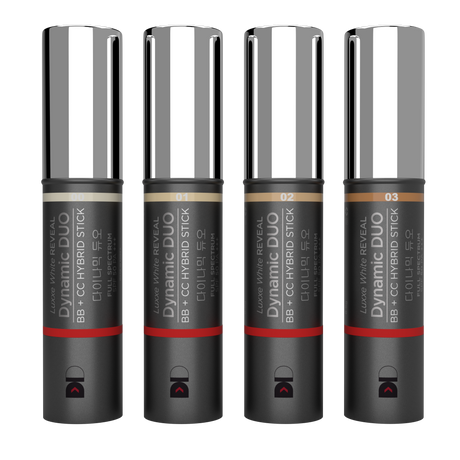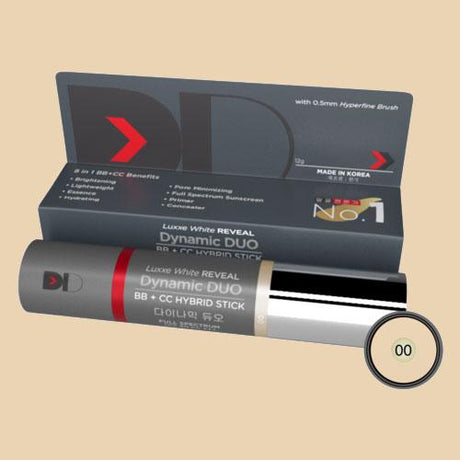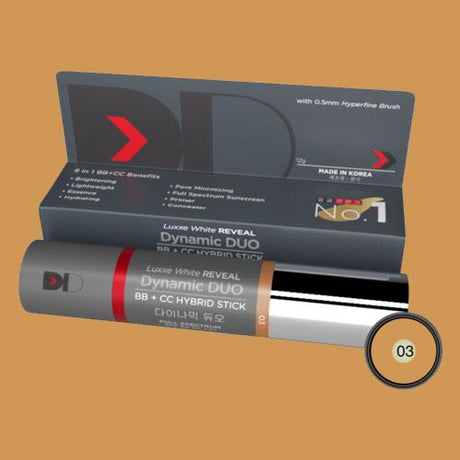In recent years, bed bugs have made an alarming resurgence worldwide, causing distress for millions of people. These tiny, blood-feeding insects have become a significant urban pest, infesting homes, hotels, and even public spaces. While their bites aren't known to transmit diseases, they can cause physical discomfort, emotional stress, and financial burden.
This comprehensive guide aims to equip you with essential knowledge about bed bug bites - from identifying them to treating symptoms and preventing infestations. Whether you're currently dealing with bed bugs or want to protect yourself from future encounters, this information will be invaluable.
The Bed Bug Resurgence
Bed bugs were nearly eradicated in developed countries by the mid-20th century, thanks to widespread use of DDT and other potent pesticides. However, several factors have contributed to their comeback:
- Increased international travel
- Changes in pest control practices
- Resistance to common pesticides
- Lack of public awareness
Today, bed bugs can be found in all 50 U.S. states and across the globe, affecting people from all socioeconomic backgrounds.
Why Bed Bugs Matter
While bed bugs don't pose a significant health risk, their impact shouldn't be underestimated:
- Physical Effects: Bites can cause itching, inflammation, and in rare cases, severe allergic reactions.
- Psychological Impact: Infestations often lead to anxiety, insomnia, and social isolation.
- Economic Burden: Eradicating bed bugs can be costly, involving expenses for pest control, replacing infested items, and potential loss of income.
What This Guide Covers
In the following sections, we'll delve into:
- Detailed information about bed bugs and their behavior
- How to identify bed bug bites and distinguish them from other insect bites
- Symptoms associated with bed bug bites and when to seek medical attention
- Treatment options for bed bug bites, from home remedies to medical interventions
- Comprehensive strategies for preventing bed bug infestations
- Steps to take if you suspect a bed bug problem in your home
By the end of this guide, you'll be well-equipped to handle bed bug encounters, protect yourself and your home, and find relief if you've been bitten. Remember, knowledge is your best defense against these persistent pests.
Let's begin by understanding what bed bugs are and how they behave...
Bed bugs (Cimex lectularius) are small, parasitic insects that feed exclusively on blood. They're called bed bugs because of their tendency to live in beds and feed on sleeping humans.
Key Characteristics
- Size: Adults are about 5-7 mm long, roughly the size of an apple seed
- Color: Reddish-brown, becoming redder after feeding
- Shape: Oval and flat when unfed, more elongated and swollen after feeding
- Behavior: Nocturnal, hiding in cracks and crevices during the day
Bed bugs can live for several months without feeding and can withstand a wide range of temperatures, making them particularly resilient pests.
Symptoms of Bed Bug Bites
Bed bug bites affect everyone differently. Some people may have no reaction at all, while others might experience significant symptoms.
Common symptoms include:
- Small, red, itchy bumps on the skin
- Bites in a line or clustered pattern
- Bites on exposed areas of skin during sleep (face, neck, arms, hands)
- Intense itching
- Burning sensation
- Swelling around the bite area
- In some cases, raised, itchy welts
Less common symptoms:
- Allergic reactions (rare but can be severe)
- Anaphylaxis in extremely rare cases
- Secondary skin infections from scratching
- Anxiety, insomnia, or stress due to infestation
It's important to note that symptoms can take up to 14 days to appear after the initial bite, making it challenging to identify the source immediately.
Identification
Distinguishing bed bug bites from other insect bites can be challenging. Here are some key identifiers:
- Bite Pattern: Bed bug bites often appear in a line or zigzag pattern. This is because bed bugs tend to feed multiple times along an area of exposed skin.
- Bite Location: Bites typically occur on areas exposed during sleep, such as the face, neck, arms, and hands.
- Bite Appearance: Small, red, often itchy bumps on the skin. They may resemble mosquito bites but are often smaller.
- Timing: Bites often appear in the morning after sleeping, though this isn't always the case due to delayed reactions.
- Multiple Bites: It's common to wake up with several bites, as bed bugs often feed more than once during the night.
-
Other Signs: Look for other evidence of bed bugs, such as:
- Small bloodstains on sheets
- Dark spots on mattresses or bedding (bed bug excrement)
- Shed bed bug skins
- A sweet, musty odor in heavily infested areas
Remember, bite reactions vary significantly between individuals, making visual identification alone unreliable.
Treatment
While bed bug bites often heal on their own within 1-2 weeks, several treatments can help manage symptoms:
- Cleaning: Wash the bite area with soap and water to reduce the risk of infection.
- Over-the-counter hydrocortisone cream (1%)
- Calamine lotion
Other anti-itch creams or ointments
Oral Antihistamines: These can help reduce itching and burning sensations. Options include:
- Diphenhydramine (Benadryl)
- Cetirizine (Zyrtec)
- Loratadine (Claritin)
- Cold Compress: Applying a cold, damp cloth to the affected area can help reduce swelling and itching.
- Aloe vera gel for soothing skin
- Witch hazel for reducing itching and inflammation
- Baking soda paste for itch relief
- Antibiotics: If bites become infected due to scratching, your doctor may prescribe antibiotics.
- Corticosteroids: For severe allergic reactions, a doctor might prescribe oral corticosteroids.
It's crucial to avoid scratching the bites, as this can lead to secondary skin infections.
When to See a Doctor
While most bed bug bites don't require medical attention, you should consult a healthcare provider if you experience:
Signs of an allergic reaction:
- Difficulty breathing
- Fever
- Nausea
- Blistering at the bite site
- Widespread hives or rash
Symptoms of infection:
- Bites that are warm to the touch
- Swelling that extends beyond the bite area
- Pus or oozing from the bites
- Red streaks extending from the bites
- Fever
Persistent symptoms:
- Bites that don't heal within 2 weeks
- Intense itching that interferes with daily life or sleep
Mental health concerns:
- Anxiety or insomnia due to the infestation
- Signs of delusional parasitosis (false belief of infestation)
Prevention
Preventing bed bug bites involves both avoiding exposure and creating an inhospitable environment for bed bugs:
Travel Precautions:
- Inspect hotel rooms thoroughly before settling in
- Keep luggage off the floor and bed
- Use luggage racks or plastic bags to store belongings
- Wash all clothing on high heat after returning from a trip
Home Prevention:
- Use protective encasements on mattresses and box springs
- Reduce clutter to minimize hiding spots
- Vacuum frequently, especially around the bed area
- Wash and dry bedding on high heat regularly (at least 120°F)
Second-hand Items:
- Carefully inspect used furniture before bringing it home
- Consider treating second-hand clothing with high heat before use
Early Detection:
- Regularly inspect your bed and surrounding areas for signs of bed bugs
- Consider using bed bug interceptors under bed legs
Professional Inspections:
- In multi-unit dwellings, consider regular professional inspections
Education:
- Learn to identify bed bugs and their signs
- Understand how bed bugs spread to avoid inadvertently bringing them home
Getting Rid of Bed Bugs
If you suspect a bed bug infestation, it's crucial to act quickly:
Identification:
- Confirm the presence of bed bugs (live bugs, eggs, shed skins, fecal matter)
- If unsure, consider professional identification
Containment:
- Isolate infested items in sealed plastic bags
- Avoid moving items from infested areas to uninfested areas
Cleaning:
- Wash all bedding, curtains, and clothing in hot water (at least 120°F) and dry on high heat
- For items that can't be washed, use a dryer on high heat for at least 30 minutes
- Vacuum thoroughly, including mattresses, carpets, and furniture
- Dispose of the vacuum contents in a sealed plastic bag
Treatment Options:
- Heat treatment: Raising room temperature to at least 118°F for 90 minutes
- Cold treatment: Freezing items at 0°F for at least 4 days
- Chemical treatments: Various pesticides are available, but should be used cautiously and often require professional application
Professional Pest Control:
- For severe infestations, professional pest control services are often necessary
- They may use a combination of chemical treatments, heat treatments, and other methods
Follow-up:
- Continue to monitor for bed bugs for several weeks after treatment
- Repeat treatments may be necessary
Prevention of Re-infestation:
- Use bed bug-proof covers on mattresses and box springs
- Continue regular inspections and preventive measures
Remember, getting rid of bed bugs often requires patience and persistence. It may take several weeks and multiple treatments to fully eliminate an infestation.
The Bottom Line
Bed bug bites, while not typically dangerous, can be a source of significant discomfort and stress. Understanding how to identify, treat, and prevent these bites is crucial for anyone who may be at risk. If you suspect a bed bug infestation, it's important to act quickly and thoroughly to prevent the problem from spreading. While DIY methods can be effective for small infestations, don't hesitate to seek professional help for larger or persistent problems. With the right approach, it's possible to eliminate bed bugs and prevent future infestations.









































